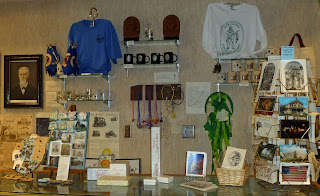According to Rowling, the interpretation is:
WOOD: Cherry - This very rare wand wood creates a wand of strange power, most highly prized by the wizarding students of the school of Mahoutokoro in Japan, where those who own cherry wands have special prestige. The Western wand-purchaser should dispel from their minds any notion that the pink blossom of the living tree makes for a frivolous or merely ornamental wand, for cherry wood often makes a wand that possesses truly lethal power, whatever the core, but if teamed with dragon heartstring, the wand ought never to be teamed with a wizard without exceptional self-control and strength of mind.
CORE: Phoenix Feather - This is the rarest core type. Phoenix feathers are capable of the greatest range of magic, though they may take longer than either unicorn or dragon cores to reveal this. They show the most initiative, sometimes acting of their own accord, a quality that many witches and wizards dislike. Phoenix feather wands are always the pickiest when it comes to potential owners, for the creature from which they are taken is one of the most independent and detached in the world. These wands are the hardest to tame and to personalize, and their allegiance is usually hard won.
LENGTH: 10" is within the average range, and length doesn't have significant impact within that range.
FLEXIBILITY: "Quite bendy" represents an adaptability and willingness to change.
But the second time I took the quiz, it gave me:
SYCAMORE WITH UNICORN CORE, TEN AND A QUARTER INCHES, UNBENDING
WOOD: The sycamore makes a questing wand, eager for new experience and losing brilliance if engaged in mundane activities. It is a quirk of these handsome wands that they may combust if allowed to become ‘bored,’ and many witches and wizards, settling down into middle age, are disconcerted to find their trusty wand bursting into flame in their hand as they ask it, one more time, to fetch their slippers. As may be deduced, the sycamore’s ideal owner is curious, vital and adventurous, and when paired with such an owner, it demonstrates a capacity to learn and adapt that earns it a rightful place among the world's most highly-prized wand woods.
CORE: Unicorn hair generally produces the most consistent magic, and is least subject to fluctuations and blockages. Wands with unicorn cores are generally the most difficult to turn to the Dark Arts. They are the most faithful of all wands, and usually remain strongly attached to their first owner, irrespective of whether he or she was an accomplished witch or wizard.
Minor disadvantages of unicorn hair are that they do not make the most powerful wands (although the wand wood may compensate) and that they are prone to melancholy if seriously mishandled, meaning that the hair may 'die' and need replacing.
FLEXIBILITY: "Unbending" represents a refusal to change.












